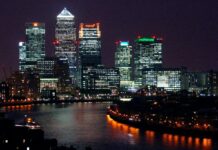Introduction
Poll Tax to Poll Tax – Potted History of Rebellion
Furious Five
FAQs – We answer your rebel FAQS
Popular on LondonNet
Poll Tax to Poll Tax – Potted History of Rebellion
London’s history is littered with popular uprisings, seditious conspiracies and radical assemblies, usually ending in the bitter taste of defeat for the change-hungry multitudes.
The first major uprising to visit the streets of London was the Peasants Revolt of 1381 when Watt Tyler marched at the head of a rag-taggle army demanding an end to the hated Poll Tax, a blanket charge levelled on every man in England regardless of wealth. More of that later. Tyler’s army had the run of the city for almost a week before envoys of King Richard II lured him to his death and the revolt soon petered out.
In 1450 the government of Henry VI faced down the rebellion of Jack Cade who, like Tyler before him, was sent to his maker by the country’s rulers in suitably violent fashion.
Parliamentary palaver
The ruling elite itself nearly succumbed to rebel ministrations in 1605 but Guy Fawkes’ plot to blow up Parliament was foiled at the last moment and the traitor was torched to death, an event still commemorated with effigy burnings every year on November 5th.
The role of Parliament was at the centre of the English Revolution which ran from 1642-49 when Parliament leader Oliver Cromwell’s New Model Army overthrew royal rule in the world’s first bourgeois revolution, helped by the capital’s citizenry who blocked a huge Royalist force at Turnham Green, west London.
Over a century later, the monarchy long restored and Parliament rife with corruption, the capital witnessed the Wilkes Riots of 1768 in which large groups of workers fought for reform of the discredited institution. A simlilar cry was to be heard during the 1831 Reform Riots as pressure for large scale change neared boiling point, a point reached in 1848, the year of revolution throughout Europe, when the Chartists gathered in their hundreds of thousands in central London.
Fighting for universal suffrage plus a range of economic demands, the Chartists had planned to march on the House of Commons but were held back by a huge show of police strength, a theme that was to become familiar in the next 150 years.
Police palaver
In 1887 a combination of the police and the army crushed the Bloody Sunday Riots of unemployed workers and state forces were again on hand in 1936 to defend the rights of Facsists to march in Cable Street, part of the then Jewish enclave of east London. As it turned out anti-fascists mobilised to defeat the scourge but the pattern of police intervention against progressive forces was confirmed.
On to the 60s, when student-led demonstrations first became a feature of life in London. Some particularly brutal clashes between police and anti-Vietnam war protestors took place in Grosvenor Square outside the US Embassy in this era but students were not to be put off and continued to invade the capital over issues such as nuclear weapons and animal rights.
While students often favoured the big moral gesture, black Londoners took to the streets (Brixton 1981, 1985 and Tottenham,1986) to demand changes in their everyday lives, specifically treatment at the hands and batons of an overwhelmingly white police force.
Then it was back to the future in 1990 when Trafalgar Square became the battleground during the second street disturbances to be casued by a Poll Tax.






